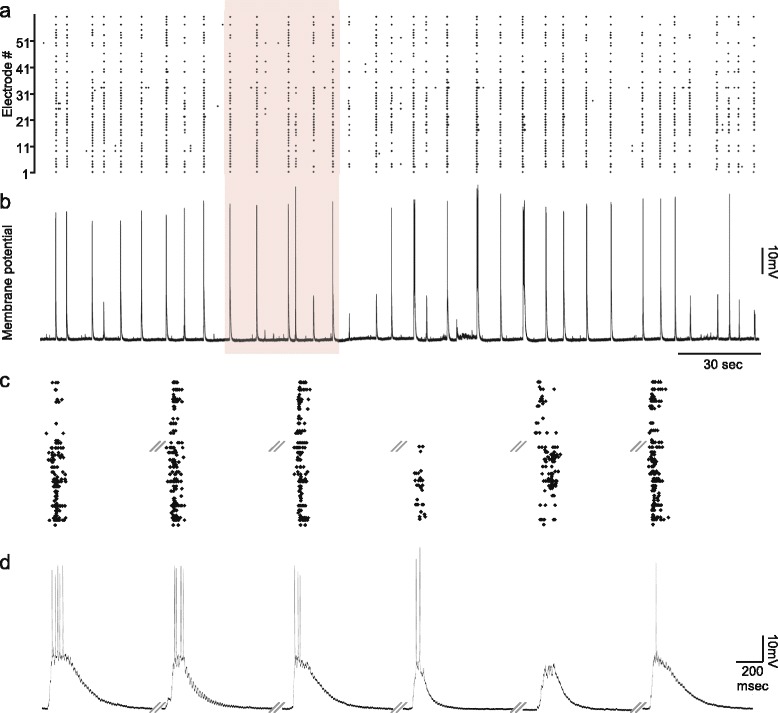Figure 2.

Synchronous bursts and quiescent periods are well correlated with neuronal membrane potential depolarization (‘up’ states) and hyperpolarization (‘down’ states). Combined intracellular whole-cell patch clamp and extracellular recordings from neurons growing on MEA substrates are shown. a) A raster plot depicting 260 seconds of network activity recorded from 59 extracellular electrodes. Each point represents an action potential recorded from that electrode. b) Concomitant intracellular recording of membrane potential from one neuron in the network over the same period. An excellent correspondence between membrane potential depolarizations and network-wide bursting is evident. c) Six events from the pink rectangle in a, shown at higher temporal resolution. d) Corresponding intracellular voltage traces for the same events shown in c. Note that each network burst is associated with strong membrane depolarization, usually crowned by one or more action potentials. These events are remarkably similar to cortical ‘up’ states observed in sleeping and anesthetized animals. Each trace in c and d is one second long. Backslashes denote omitted time periods. The initial membrane potential in b and d was approximately -55 mV. MEA, multielectrode array.
